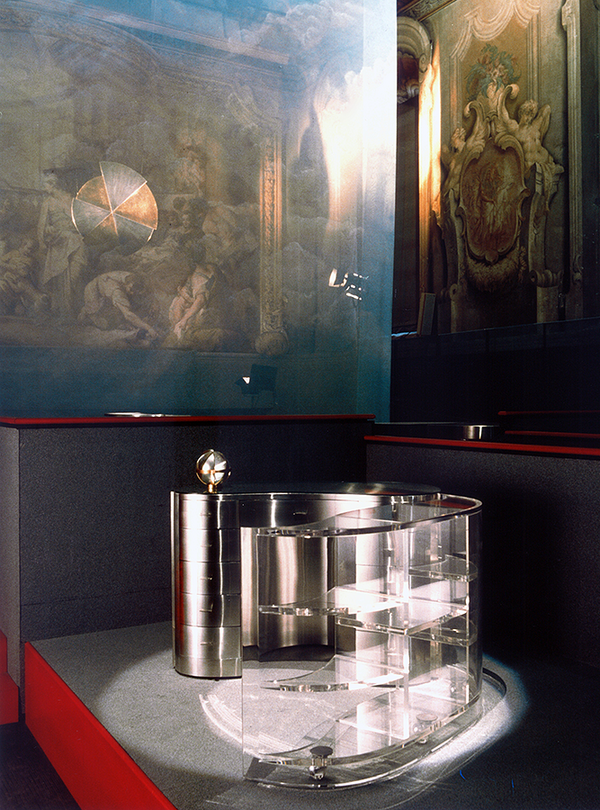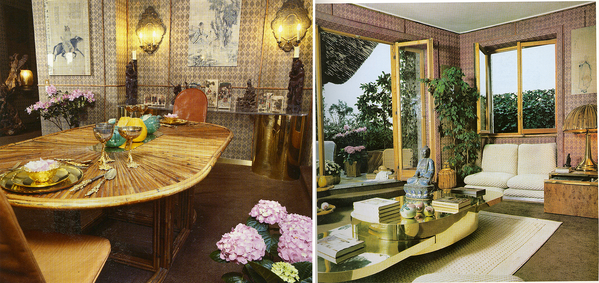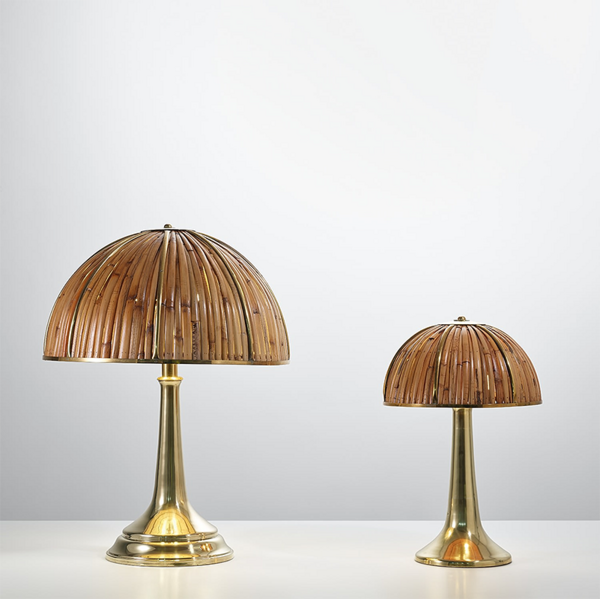Gabriella Crespi, Pair of 'Bar Ovale' cabinets, from the 'Menhir' series, 1979. Design London.
Gabriella Crespi’s delightful designs are iconic manifestations of her distinct style and creativity. To discover more about her inspiration for the eight objects she designed featured in this sale, Phillips asked her daughter, Elisabetta Crespi, to reveal more about the ideas and creative process behind her mother’s spellbinding objects.
PHILLIPS: Many of Gabriella Crespi’s creations were designed as one-of-a-kind pieces. Could you tell us more about the clientele who loved and commissioned her pieces?
ELISABETTA CRESPI: During the 1950s, when my mother’s business began, the first clients came through word of mouth of the Milanese aristocracy who were attracted by her early work. These first pieces consisted mainly of small and refined gifts and objects for the table or desk which were always executed in refined materials. By the 1960s, her clientele was increasingly varied, from show business personalities, fashion designers, shipping families and well-known entrepreneurs. Much of her work was executed on commission, of which many were prestigious. They included several embassy headquarters, royal families, and important residences around the world. I still remember when Shams Pahlavi, who used to come regularly to our showrooms in Milan and Rome, commissioned the entire ‘Rising Sun’ collection for his brother Reza Pahlavi’s summer residence in Mauritius. Our customers knew that every piece of my mother's work was done by hand and that no two pieces would be the same. They also knew that her creations were not born following a trend and did not follow the rules of mass production, so it did not matter if the production time was much longer.

Gabriella Crespi, Extendable dining table, from the 'Rising Sun' series, circa 1975. Design London.
P: A diverse and unexpected combination of materials characterises Gabriella Crespi’s creations. In particular, the ‘Yang Yin’ desk with integrated bookcase perfectly exemplifies this choice. The imposing steel of the desk strikingly contrasts with the lightness of the acrylic used for the bookcase. What was the inspiration for this object?
EC: The ‘Yang Yin’ series dates to 1979 and in addition to the desk-bookcase, it included a dining table, a bar cabinet, and a large block sculpture ‘Armadio’. My mother always stated that her greatest source of inspiration was the universe, with its opposing but always complementary forces, from which every form of life originates. The entire collection was influenced by this concept and the present lot is one of the very few examples made of two very different materials that reflect my mother’s thinking very well. An example made from the same materials was exhibited in September 1982 at the Museo della Scienza e della Tecnica in Milan as part of the exhibition ‘I Plurimi di Gabriella Crespi 1970-1982’.

The present model desk with integrated bookcase on display at the Museo della Scienza e della Tecnica, Milan, 1982. Photo: Archivio Gabriella Crespi.
P: The ‘Rising Sun’ series is one of Gabriella Crespi’s most iconic creations, of which the artist also had many pieces in her home in Milan. Could you tell us about the creative process behind this series?
EC: The sun was the great source of inspiration behind the ‘Rising Sun’ series, which was executed between 1973 and 1975. Through the skilled hands of our artisans, Malacca and manao canes were almost always juxtaposed with brass details and brought to life her dining tables, defined by long rays that sprang from a central golden sun, as well as the chairs that surrounded them. There were also mushroom-shaped lamps, mirrors, screens, trays, candlesticks, and smaller size objects with the same characteristics in this series. Rattan was a natural material much loved by my mother because it was strong and flexible at the same time, and because the upwards projecting canes gave her the impression of infinity. Through this material, she wanted to break the boundaries between interior and exterior, something she had always imagined as was evident in her houses. Our craftsmen executed the prototypes and the designs of this series with extreme precision until the mid-1980s. My mother then decided to pursue her spiritual path in India, where she lived for almost twenty years in the foothills of the Himalayas.

The present model dining table and ‘Fungo’ table lamp in Gabriella Crespi’s Milanese apartment, 1978. Photos: Archivio Gabriella Crespi.
P: The unconventionality of the names Gabriella Crespi chose for her furniture is another key feature of her artistic contribution. Where did the choice come from to call ‘Mehnir’ and ‘Plurimi’ two of her furniture series from which the Oval Bars and the 2000 coffee table?
EC: The choice of names for her works or series often had a symbolic meaning for my mother. ‘Plurimi’ was the name she gave to her series of metamorphic tables created between 1970 and 1982, in which the main feature was the plurality of forms and functions. A sentence by Gorakhnat that my mother quoted in her book written following her return from India, reflects the meaning very well: ‘Plurality dances on the bosom of Unity, Matter plays in the heart of the Spirit.’ The ‘Menhir’ series takes its name from the large monolithic stones that were erected in various parts the world in different prehistoric periods. These furniture-sculptures, designed between 1976 and 1978, which could also be placed in the center of a room, ushered in the era of free-standing furniture, in contrast with the previous tradition of wall-mounted pieces.

Gabriella Crespi, Large 'Fungo' table lamp, from the 'Rising Sun' series, circa 1973. Design London.
Recommended Reading
